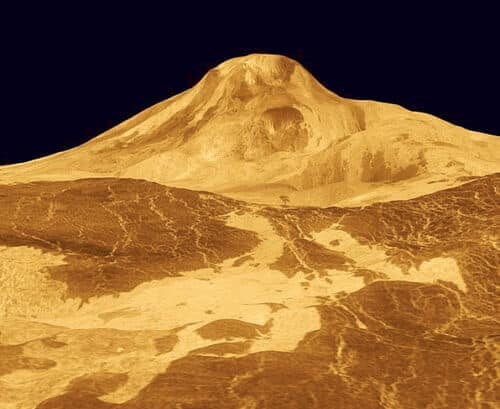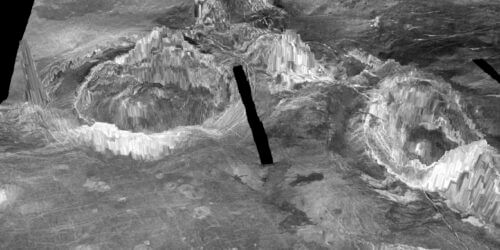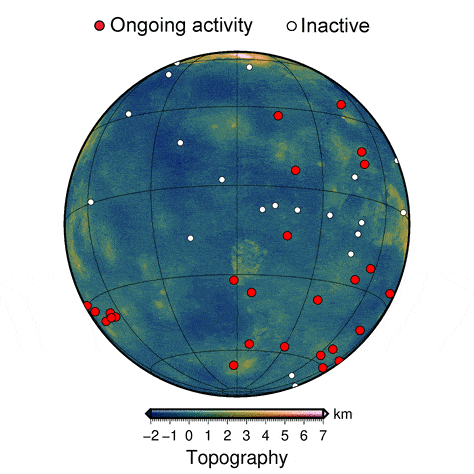"This is the first time we can point to specific structures and say, 'Look, this is not an ancient volcano, but one that is active today, maybe dormant, but not dead,'" said Lauren Montesi, a professor of geology at the University of Maryland and co-author of the research paper. "This study significantly changes the opinion on Venus from a planet that is mostly inactive to one whose interior is still noisy and can feed many active volcanoes."

A new study identified 37 volcanic structures that were recently active on Venus. The study provides some of the best evidence yet that Venus is still a geologically active planet. A research paper on the work, done by researchers at the University of Maryland and the Institute for Geophysics at ETH Zurich, Switzerland, was published in the journal Nature Geoscience on July 20, 2020.
"This is the first time we can point to specific structures and say, 'Look, this is not an ancient volcano, but one that is active today, maybe dormant, but not dead,'" said Lauren Montesi, a professor of geology at the University of Maryland and co-author of the research paper. "This study significantly changes the opinion on Venus from a planet that is mostly inactive to one whose interior is still noisy and can feed many active volcanoes."

Scientists have long known that Venus has a younger surface than stars like Mars and Mercury, which have cold surfaces. Evidence of a hot surface and geological activity dot the surface of a star in the form of ring-like structures called coronas, which form when plumes of hot material deep within the star rise through the mantle and crust. This is similar to how mantle plumes formed the volcanic islands of Hawaii.
But it was thought that the coronas on Venus were probably signs of ancient activity, and Venus had cooled enough to slow down the geological activity in the star's interior and harden the crust to such an extent that any hot material from the depths could not pierce out. In addition, the exact processes by which mantle plumes formed coronas on Venus and the reason for the variation between coronas have been matters of debate.

In the new study, the researchers used numerical models of thermomechanical activity below the surface of Venus to create high-resolution three-dimensional simulations of coronal formation. Their simulations provide a more detailed view than ever before of the process.
The results helped Montesi and his colleagues identify landforms found only in recently active craters. The team was able to match these shapes to those observed on the surface of Venus, and discovered that some of the variation in the star's crowns represents different stages of geological development. The study provides the first evidence that Venus' coronas are still developing, an indication that the star's interior is still noisy.
"The improvement in the degree of realism in these models compared to previous studies makes it possible to identify several stages in the development of crowns and to define diagnostic geological forms that are only found in crowns that are currently active," said Montesi. "We can say that at least 37 crowns have been very active recently."
The coronas of activity in Venus are clustered in a few places, and this indicates areas where the planet is most active, and hints at the mode of operation of the planet's interior. These results may help identify target areas where geological instruments will be placed on future missions to Venus, such as Europe's EnVision scheduled for launch in 2032.
More of the topic in Hayadan:
